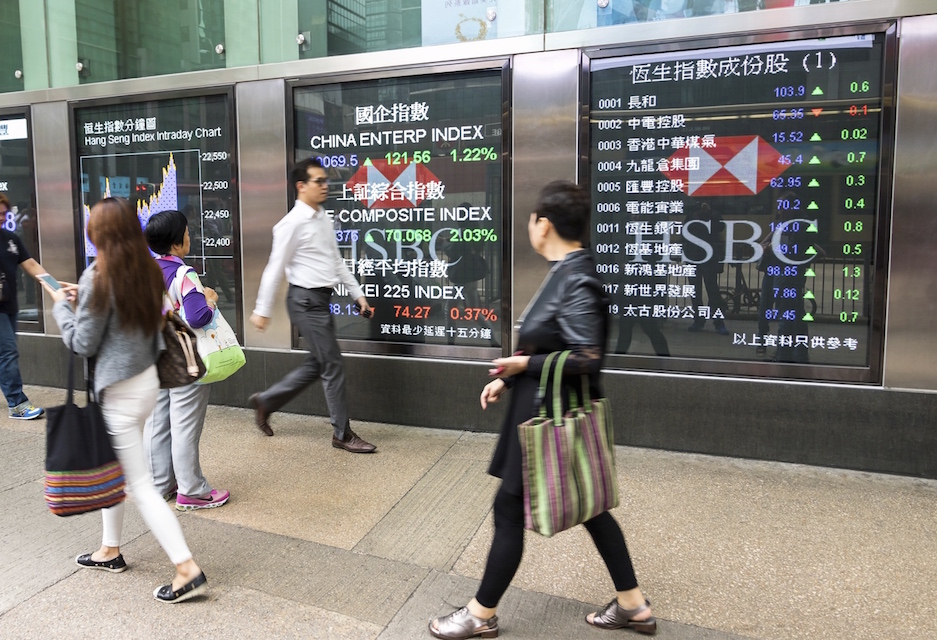Soybean Prices are a Proxy for How the Trade War is Going
Soybeans are in your cereal, candles, crayons and car seats
Soybeans have more far uses than most of us realize. After harvesting, soybeans are dehulled and rolled into flakes as its oil is extracted. Soybean oil has become an ingredient ubiquitous in dressings, cooking oils and many foods, but is also sold for biodiesel production and other industrial uses.
Soy flours feature prominently in commercial baking. Soy hulls are part of fiber bran cereals, breads and snacks. Soybeans are even part of building materials, replacing wood in furniture, flooring and countertops. They are in carpets, auto upholstery and paints. Soybean candles are popular because they burn longer with less smoke. Soy crayons are non-toxic for children. And – because soybeans are high in protein – they are a major ingredient in livestock feed, which provides much of the impetus for globally traded soybeans.
Bean counting
Given this panoply of applications, it should be no surprise that global demand for soybeans is growing, but it’s mostly animal mouths we are feeding. Demand for soybean meal for livestock feed drives two-thirds of the export value of traded soybeans.
According to the Agricultural Market Information System, three countries produce 80 percent of the world’s soybeans to fill this demand: the United States, Brazil and Argentina.
At 123.7 million metric tons produced in 2018, U.S. farmers accounted for 34 percent of world production. Brazil’s farmers yielded 117 million metric tons, accounting for 32 percent of world production, but Brazil exported larger volumes than the United States.
Rounding out the top three, Argentina accounts for 15 percent of world production but exported just 6.3 million metric tons in 2018. China is fourth, producing 15.9 million metric tons in 2018 – just four percent of world production.
America’s second largest crop
Grown on more than 303,000 farms across the United States, soybeans are the second largest cash crop for American farmers. Conventional soybeans are grown in 45 U.S. states while high oleic soybeans are grown in 10 states. Though output varies each year, at 4.54 billion bushels in 2018, U.S. growers are so productive they can now yield twice as many bushels of soybeans as two decades ago. (At SoyConnection.com, you can click on this map to see the number of farms, acres, and bushels produced in each state.)

China’s insatiable appetite
China cannot get enough soybeans. When China entered the WTO in 2001, the country was already consuming 15 percent of the world’s soybeans, driving 19 percent of global trade in soybeans. By 2018, China’s appetite had grown 815 percent according to the U.S. Farm Bureau, which says China’s demand now supports 62 percent of world trade in soybeans.
According to the Farm Bureau’s calculations, China consumes one-third of every acre harvested in the world – an amount equivalent to or more than total U.S. soybean acreage. Around 60 percent of U.S. yields were sold to China in 2017, which means there was a lot at risk for U.S. farmers caught in the crosshairs of the trade war that unfolded in 2018.
A pawn in the trade war
In July 2018, the United States fired the first tariff shot in its efforts to seek redress for the intellectual property theft cited in its Section 301 investigation into China’s practices, by imposing tariffs on $34 billion worth of China’s imports. China responded with 25 percent tariffs on an equivalent amount, including on soybeans from the United States. The tariff has remained in place as leverage in the trade war – a proxy for whether China perceives progress is being made or not in the negotiations.
In intermittent gestures of goodwill, China agrees to make purchases but has often not fulfilled orders for the promised amounts. When President Trump angrily tweeted on August 23 this year that China was not negotiating in good faith and that U.S. tariffs would cover more imports from China, China responded in part by adding five percent to its tariffs on soybeans.
A factor in price fluctuations
The Food and Agricultural Policy Research Institute at the University of Missouri recently offered a gloomy forecast for lower prices for soybeans: $8.43 per bushel for 2019-20, dropping further to $7.94 per bushel for the 2020-21 marketing years. They say lower prices are resulting from a combination of adverse weather, African swine fever disease that is decimating herd inventories throughout Asia and therefore weakening demand for feed – and the ongoing trade dispute.
On May 13 this year, coincident with some fiery presidential tweets expressing frustration with China, soybean prices reached a 10-year low. USDA estimates that, at 4.54 billion bushels produced last year, a drop in average price per bushel from $9.33 in 2017 to $8.60 in 2018 translates to losses for U.S. soybean farmers of $3.3 billion.

Bait and switching
Adding to the strain of lower prices, China has drastically pared back its soybean orders from the United States. In 2016, the United States shipped 36.1 million metric tons of soybeans to China. In 2018, sales dropped to just 8.2 million metric tons.
The Chinese government is able to avoid its own tariffs by directly purchasing U.S. soybeans which it then sells to private users in China. The government has also granted tariff exemptions to Chinese soybean crushers. Just this week, the government granted an exemption to state-owned, private and international companies to import 10 million metric tons of U.S. soybeans tariff-free. Overall, the quantities purchased through these mechanisms is not nearly enough to make up for the vast shortfall in supply from the United States.
So, China is buying more from Paraguay, Uruguay, Argentina, Canada and in particular from Brazil, which has moved in to supply 75 percent of China’s total imports. For U.S. soybean exporters, lower prices per bushel have attracted new buyers from Europe, Mexico and elsewhere, but those sales are not enough to replace lost sales in China.

Homegrown
China is hedging its bets by rejiggering the incentives it provides to its own farmers. Upon releasing a new white paper, the head of the National Food and Strategic Reserves Administration said that even though China’s food production and reserves are strong, “We must hold the rice bowl firmly in our hands, and fill it with even more Chinese food.”
In addition to directly investing in agricultural infrastructure in Brazil, neighboring Russia, and other suppliers, the Chinese government has set a goal to increase domestic soybean production in five years from 16 million to 24 million metric tons, according to the U.S. Soybean Export Council.
News China reported in January that Chinese farmers in Heilongjiang, China’s main grain producing province, are being provided incentives to switch from wheat and corn to planting more soybeans. For years, the Chinese government has offered price supports for corn. Under new policies, crop rotation can earn Chinese farmers $322 per hectare in subsidies in addition to subsidies of between $373 and $430 per hectare offered by provincial authorities.
The Ministry of Science and Technology is also supporting trials of hybrid soybean seeds that are more weather-resistant and could more than triple the average yield for soybeans grown in China.

Long term disruptions
It’s possible the United States and China will ink a partial deal in the coming weeks that provides relief for American soybean farmers.
The American Soybean Association says it is “hopeful this ‘Phase 1’ agreement will signal a de-escalation in the ongoing U.S.-China trade war… rescinding the tariffs and helping restore certainty and stability to the soy industry.”
China has reportedly promised to purchase $40 billion to $50 billion in U.S. agricultural goods, which would be scaled up annually. That would be double the $24 billion China spent on American farm goods in 2017.
When seeds are in the ground, the acreage is committed, but as American farmers wait and watch the trade war, they are surely thinking about how to plant around these disruptions in outer growing years.
Over the last year, some reliable overseas customers are buying up stocks of U.S. soybeans that would otherwise have gone to China and some new customer relationships are being forged in emerging markets such as Egypt, Bangladesh, Pakistan and Southeast Asia.
When the tariffs are permanently removed, it will remain to be seen whether trading patterns will also have permanently shifted.
Andrea Durkin is the Editor-in-Chief of TradeVistas and Founder of Sparkplug, LLC. Ms. Durkin previously served as a U.S. Government trade negotiator and has proudly taught international trade policy and negotiations for the last fifteen years as an Adjunct Professor at Georgetown University’s Master of Science in Foreign Service program.







